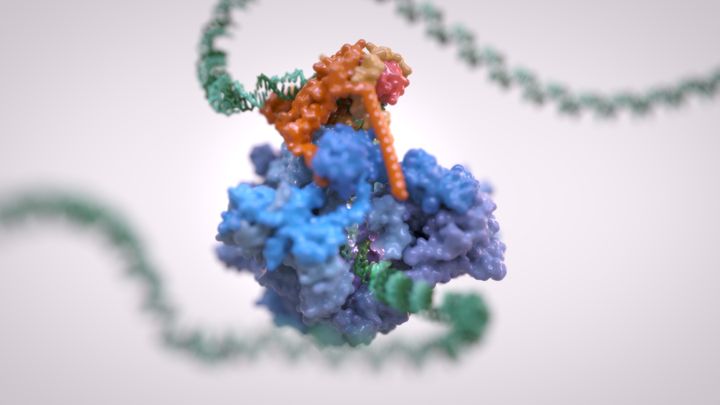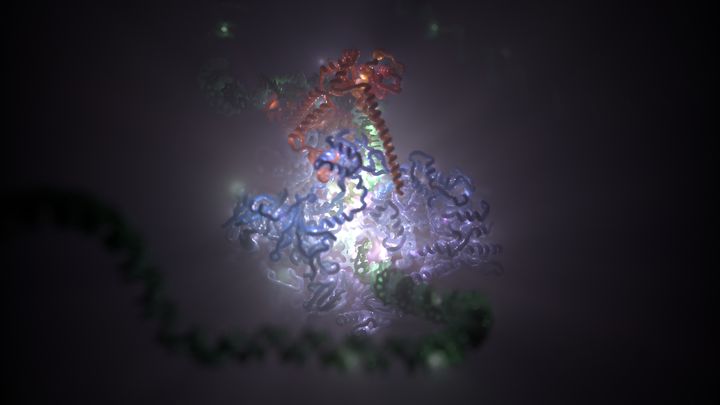Scientists have unveiled some astonishing pictures of DNA code actually being read and “transcribed” in real-time.
This is the first time ever that we’ve been able to watch this process and by understanding its intricacies, scientists believe it could lead to “new ways to tackle cancer.”

The process of reading DNA and decoding it to build proteins is a crucial biological process that all animals and plants go through, it’s also something that is often hijacked by cancer.
Using the same incredible microscope technology that won the Nobel prize last year, scientists from The Institute of Cancer Research, London were able to catch a piece of molecular machinery called RNA Polymerase III in the process of transcribing a gene.

The imagery shows the RNA Polymerase III as a multicoloured mass with the DNA strands on either side. Inside this mass, the DNA is being unwound and transcribed.
RNA Polymerase III is a crucial component in complex life, and it’s something that cancer is able to accelerate, using it to produce larger numbers of the building blocks it needs to multiply.
“Now we know how the components of this crucial molecular mechanism fit together, we may be able to design drugs that turn the system on or off - and these could offer a whole new way of treating cancer.” explains Dr Alessandro Vannini, Team Leader in Structural Biology at The Institute of Cancer Research, London.
The team were able to see the DNA like never before by utilising a brand-new type of electron microscope called Cryo-EM, for which the Nobel Prize was awarded in 2017.
Cryo-EM works by freezing and then imaging samples at -180°C to preserve the minute details of protein shapes.

The images can then be processed, combined and turned into precise 3D models or used to analyse step-by-step how our DNA is read and then turned into actions.
Dr Amanda Collis, interim Executive Director of Science at BBSRC, said: “Cryo-EM is rapidly advancing our knowledge of the structure and behaviour of biological molecules, and this exciting discovery demonstrates how fundamental understanding of biological systems can open the door to the development of potential new cancer therapies.”
Cryo-EM is so powerful that it can take pictures of the tiniest molecules - approximately 5 nanometers or 20000th of the width of a human hair.
Commenting on the achievement, Universities and Science Minister Sam Gyimah said: “This incredible new advancement in DNA decoding will further our understanding of disease, potentially leading to vital lifesaving treatment, including new ways to tackle cancer.
